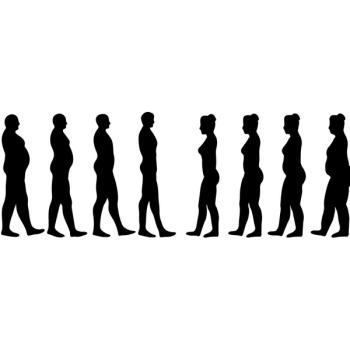
ZIP Codes and Waistlines: Location, Location, Location
Researchers discover new evidence about the interplay between environment and health.
People who move to poorer neighborhoods tend to gain weight, according to a longitudinal cohort study published online on May 8 in the
This weight gain becomes more pronounced with time and happens independently of other factors associated with overweight and obesity that occur in disadvantaged neighborhoods, such as low income, lack of education, and physical inactivity, the researchers reported.
“This study provides additional, stronger evidence that the environment you live in can adversely affect your health,” lead researcher
Powell-Wiley and colleagues analyzed data from the
The researchers also used a Neighborhood Deprivation Index (NDI), based on 21 variables including the percentage of households on public assistance, incomes below the poverty line, and unemployment in each Dallas County neighborhood.
Complete data were available for 1835 participants. Of these, 263 had moved to a more economically disadvantaged neighborhood, 586 to a better neighborhood, 47 to a similar neighborhood, and 939 remained where they were.
After adjusting for variables including sex, age, race, education, income, smoking, and physical activity, the investigators found that participants who moved to poorer neighborhoods gained an average of 0.64 kg for each unit of difference on the NDI scale compared with those who relocated to better neighborhoods or didn’t move at all (95% CI, 0.09-1.19; P<.05).
The investigators also reported that length of time spent in a more disadvantaged neighborhood was associated with additional weight gain. For those who lived in such neighborhoods for more than 4 years, there was an additional average weight gain of 0.85 kg for each unit of difference on the NDI scale (95% CI, 0.08-1.62; P<.05).
“These results suggest a link between neighborhood NDI and weight gain,” wrote Powell-Wiley and colleagues. “This relationship appears to be strengthened by increasing residence length in the new neighborhood, further suggesting that cumulative exposure duration to neighborhood deprivation impacts the potential for obesity and obesity-related cardiovascular morbidity.”
“This paper is important because it is one of the few longitudinal studies of how one’s neighborhood can affect health outcomes like obesity,”
“The landmark Moving To Opportunity study showed that moving out of a high-poverty area into a low-poverty can reduce the prevalence of obesity. Conversely, this study shows that moving into a high-poverty area can increase obesity among individuals. It adds evidence to support the notion that where you live, not just how you live, can potentially impact your health,” Peek said.
Clinical Implications
“I hope our work gets physicians thinking about the fact that just telling someone to change their behavior is not enough-you also need to think about what environment they are in and what kinds of resources they have,” Powell-Wiley told MedPage Today.
Advising patients to get more exercise isn’t much help if they don’t have access to a gym or even adequate green space to get out for a walk, she explained.
“Physicians should talk with patients about whether they have the resources to change their lifestyle, and if the patient doesn’t then they should discuss how to get access to those resources,” she said.
Powell-Wiley and her colleagues are developing an intervention to target obesity and cardiovascular risk in economically disadvantaged neighborhoods in Washington, DC. This intervention will partner with faith-based communities to help educate their members about effective diet and lifestyle changes.
“We are also looking at ways to target physical inactivity with wearable, mobile health technology such as a wristband ‘Fitbit’-type of device,” she said.
Possible Underlying Causes
However, Powell-Wiley and colleagues adjusted for changes in physical activity in their study, so the investigators speculated that other environmental factors may be at play to explain their results.
Dietary factors, such as excessive consumption of high-fat foods or alcohol, are one possibility, they noted. However, data on dietary factors were not available for this study.
The researchers also suggested that the biological stress response to a more difficult environment might be a factor.
“Changes in biomarkers, including cortisol and C-reactive protein, associated with living in disadvantaged neighborhoods suggest that sympathetic activation or alterations to the typical hypothalamic-pituitary-adrenal axis may contribute to a biological pathway by which exposure to neighborhood deprivation promotes weight gain,” they wrote.
The researchers cited a recent genetic profiling study of healthy adults who were raised in both low- and high-socioeconomic environments, published in the
In that study,
And for the current study, the researchers noted that “overall, these results are hypothesis-generating and suggest the relationship between neighborhood deprivation change with moving and weight change is an area worthy of further study.”
This research was supported by the National Heart, Lung and Blood Institute and the National Institutes of Health Medical Research Scholars Program.
Researchers disclosed no relevant relationships with industry.
- Reviewed by
Robert Jasmer, MD, Associate Clinical Professor of Medicine, University of California, San Francisco, and Dorothy Caputo, MA, BSN, RN, Nurse Planner
Primary Source
American Journal of Preventive Medicine
This article was first published on
Newsletter
Enhance your clinical practice with the Patient Care newsletter, offering the latest evidence-based guidelines, diagnostic insights, and treatment strategies for primary care physicians.































































































































































































































































































































